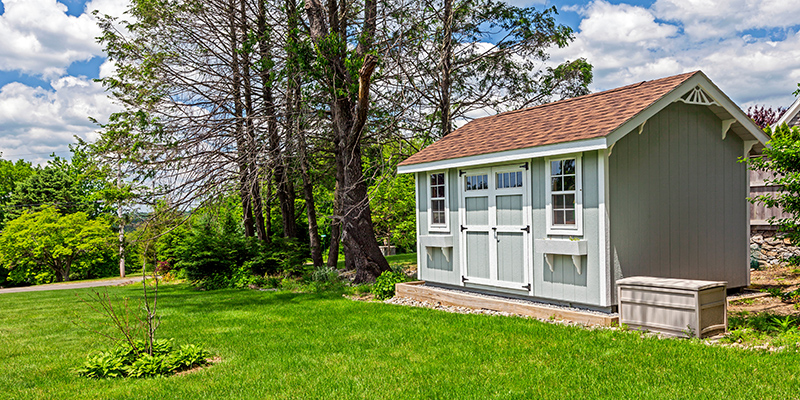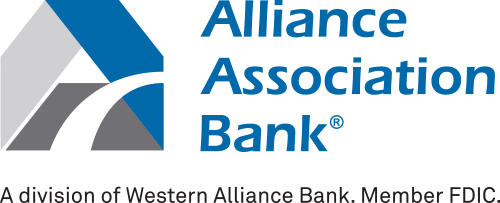Robert’s Rules Of Order Election Of Officers: How It Works

The election of officers per Robert's Rules of Order holds substantial importance in the functioning of various organizations, including homeowners associations. Virtually all associations need leaders to act as decision-makers. It is crucial to adhere to proper procedures during the nomination and election of officers to prevent any irregularities.
Browse By Category
Sign up for Our Newsletter
The election of officers per Robert’s Rules of Order holds substantial importance in the functioning of various organizations, including homeowners associations. Virtually all associations need leaders to act as decision-makers. It is crucial to adhere to proper procedures during the nomination and election of officers to prevent any irregularities.
Robert’s Rules of Order: Motions for the Nomination of Officers
When it comes to the nomination of officers, there are two possible motions: to close the nominations and reopen the nominations.
1. Close the Nominations
- Objective: Efficiently finalize the nominations and advance to the voting phase.
- Cannot be proposed when another member is speaking.
- Needs a second? Yes.
- Amendable? Yes.
- Debatable? No.
- Two-thirds majority vote required? Yes.
- Reconsideration possible? No.
- Outcome: Official closure of nominations, initiating the commencement of the voting process.
A two-thirds majority vote is required for the motion to limit members’ nomination rights. This voting threshold protects the assembly, preventing the potential abuse of power by a temporary majority aiming to impede the nominating process. A member should initiate the motion to close nominations when no one else currently has the floor. Furthermore, a rising vote is consistently employed for this particular motion.
2. Reopen the Nominations
- Objective: Reopening nominations to consider additional candidates for office.
- Needs a second? Yes.
- Amendable? Yes.
- Debatable? No.
- Majority vote required? Yes.
- Reconsideration possible? Yes, for a negative vote.
- Outcome: Members have the opportunity to propose additional nominees for consideration.
The designated time for closing or reopening nominations may be stated in the initial motion or introduced as an amendment. Since reopening nominations doesn’t infringe upon members’ rights, this motion requires only a majority vote, which is usually determined through a voice vote. A member can initiate the motion when no one else currently has the floor to propose the reopening of nominations.
Duties of the Nominating Committee
Here are the duties of the nominating committee.
Function of Nominating Committee
- Identify the most suitable candidate for each position.
- Bylaws must allow flexibility when considering multiple candidates for each office.
- Committee members are eligible to run for election.
Committee Meetings
- Meetings should involve a thorough review of the membership list to select individuals for positions.
- The designated committee member contacts nominees to confirm their willingness to serve.
- If a nominee declines, the committee reconvenes to find an alternative candidate.
Candidate Absence
- If no candidate is found, the committee can:
- Leave the slot open for nominations from the floor.
- Publicly announce the absence of a nominee, encouraging member volunteers.
Consent Emphasis
- No one should be nominated without consent to avoid potential declined service, which would need another election.
Committee Report
- The nominating committee usually presents its report as part of “special orders.”
- The committee chairman announces the nominations for each office when called upon.
- In cases of dissent within the nominating committee, the minority can propose alternative nominations during open floor nominations.
- After presenting its report, the committee is relieved of its duties.
- The committee may reactivate in certain instances to nominate individuals to fill vacancies.
Available Nomination Methods
Typically, a nominating committee presents nominations, while the assembly can propose additional candidates from the floor. It’s crucial to distinguish this nominating process from the subsequent election to office. According to Robert’s Rules of Order, a prior nomination is not a prerequisite for election. During a ballot vote, individuals can exercise the option to write in a name, enabling someone to win as a write-in candidate without a formal nomination.
When the bylaws are silent regarding the nomination procedure, any member can make a motion to establish a nominating process. This motion falls under the category of an incidental main motion, requiring a second, being non-debatable but amendable. Adoption requires a majority vote. Nonetheless, it is considered preferable for the bylaws to outline the nomination procedure explicitly.
There are five nomination methods: by committee, from the floor, by ballot, by mail, and by petition.
1. Committee Nomination
Many organizations, including homeowners associations, utilize a nominating committee. The bylaws should clearly define the committee’s composition and selection process. It is important to emphasize that the president should not be a member of or be involved in selecting the nominating committee. Ideally, the board or the general membership should elect the nominating committee whenever possible.
2. Floor Nomination
When the president initiates floor nominations, any member has the freedom to propose a candidate. The nomination guidelines align with those set for the nominating committee. Members must ensure the eligibility and willingness of their nominees beforehand.
Key points regarding floor nominations include:
- Members are not required to seek recognition; a name can be called out in small assemblies while a member is still seated.
- Self-nominations are allowed.
- No seconding of nominations is necessary.
- A member can be nominated for multiple offices.
- Until everyone has had the chance to make nominations, a member can’t nominate more than one person for an office.
- Nominees are not obliged to leave the room during nominations, voting, or the vote count.
- The presiding officer, even if a nominee, can continue presiding.
- Members can rise and decline a nomination during the nominating process.
- Following each nomination, the president reiterates the name to the assembly.
3. Ballot Nomination
An organization can opt for an alternative to floor nominations by employing a ballot for the nomination process. In this method, each member receives a nominating ballot and can actively write down the name or names of one or more candidates. The tellers’ committee is responsible for tallying the ballots and furnishing the president with a list of nominees for announcement. Following this, a vote is conducted for the election. It is crucial to emphasize that the nominating ballot should not be used as the electing ballot.
4. Mail-In Nomination
Mail-in nominations offer an ideal solution for organizations with members living in different locations. The secretary actively sends a nominating ballot to each member, providing clear instructions on completion. Upon receiving members’ mailed-in nominations, the secretary actively compiles the ballot, serving as the foundation for the subsequent voting process by members.
5. Petition Nomination
In some cases, an organization’s bylaws may specify nominations by petition. In these instances, a nominee actively secures support by gathering signed petitions from members before their nomination is added to the ballot. The nominating petition can be circulated via newsletter or direct mail to members.
Robert’s Rules of Order: Motions for the Election of Officers
In a ballot vote, the president typically proclaims the polls closed after ensuring that all individuals who want to vote have done so. Once closed, the organization should not accept additional votes, and the tellers proceed to count the votes. A member can initiate a motion to close the polls, requiring a second and a two-thirds vote for adoption or unanimous consent. The president should avoid entertaining a motion to close the polls if voting is ongoing.
If members wish to vote after the polls close, a member can propose to open the polls, requiring a majority vote for adoption. The polls can reopen until the tellers present their report and the presiding officer announces the results. In the reopening, keep any received ballots separately until the initial count is complete. Subsequently, the tellers’ report should show these ballots.
Available Voting Methods
Following the nomination process, members proceed to cast their votes for the candidates. When the bylaws do not outline the voting procedure, a member can propose an incidental motion to establish how to conduct the vote.
Organizations commonly employ four voting methods: voice, ballot, roll call, and cumulative voting.
Robert’s Rules of Order Election of Officers: Voting Methods Explained
- Voice. If there is only one candidate for office, and the bylaws don’t specify the election method, using a voice vote is appropriate. However, members cannot write in a candidate in a voice vote election. When multiple candidates receive nominations, and the organization uses a voice vote, the chair actively conducts the vote in the order of nominations. Members must cast affirmative votes for their preferred candidate and negative votes for others. The candidate with the majority vote emerges as the winner.
- Ballot. There are two ways in which vote ballots can occur: slated ballots and individual ballots. A slated ballot includes all candidates’ names and space for write-in candidates. Meanwhile, with individual ballots, voters receive a blank piece of paper on which they write the names of the candidate or candidates they wish to vote for.
- Roll Call. When members choose a roll call vote, the organization can employ the same approaches used in a ballot vote—either voting collectively for all candidates or individually for each. The presiding officer should clarify the process. During the roll call, each member actively declares their vote as the secretary calls it. The secretary records and repeats the vote to ensure accuracy.
- Cumulative. This voting method enables members to assign all their votes to a single candidate or distribute them unevenly. For instance, if a voter has five votes, they may allocate all five to one candidate or distribute two votes for one candidate and the remaining three to another. Cumulative voting is only applicable if the bylaws explicitly specify it as such.
Duties of a Tellers’ C0mmittee
A tellers’ committee, typically comprising two to three members, exists to tally votes during meetings involving a ballot or a rising counted vote. In smaller organizations, the presiding officer may appoint members or a knowledgeable secretary to count votes in the absence of a designated committee.
A chairman leads the tellers’ committee for larger organizations or national conventions, which receives appointments for the entire event or year. The chairman oversees ballots, training, and the counting process, actively participating throughout the session, including counting voice votes upon request. The committee plays a crucial role in upholding accuracy and integrity in the voting process.
- The tellers’ committee follows a systematic process for counting ballots:
- Teller One ensures the legitimacy of each ballot.
- Set aside blank ballots while placing illegal ones in a separate pile.
- Teller One tallies legal ballots and records the total votes cast.
- Note that illegal ballots are used separately to determine the majority vote number.
- Teller One reads each ballot, stating candidate names.
- The second and third teller keep separate sheets, marking and tallying each candidate’s name.
- Teller Two repeats each name for accuracy.
- Announce a “tally” when a candidate reaches five votes.
- Identify and correct any discrepancies between Teller Two and Teller Three.
- The committee totals votes for each candidate and records the counts.
- Mark candidates with a majority vote as “elected”; otherwise, indicate “no election.”
- Each committee member signs the report.
- Teller One reads the report to the assembly and presents it to the presiding officer.
Robert’s Rules of Order Election of Officers: How to Deal With Discrepancies
In elections, members may observe mistakes or illegal procedures in ballot collection or counting, especially when tellers lack training or opposition arises among candidates. If someone notices a procedural error, a member should promptly bring it to the attention of the chair and the assembly.
To tackle such challenges, organizations should formulate rules outlining procedures when a member contests an election or if an illegal election occurs. These rules may specify the duration for saving ballots and the timeframe within which members can dispute an election, taking precedence over the adopted parliamentary authority.
It’s crucial to highlight that upon the election of a member, revoking isn’t possible unless the bylaws provide for such a scenario. In case of an error in ballot counting or other procedural aspects, organizations can establish election rules to rectify the mistake.
A common election error involves casting more ballots than the number of present members. The election remains valid if this discrepancy doesn’t impact the vote outcome. Extra ballots often result from individuals entering the assembly without signing in to the meeting.
Election of Officers: Following Robert’s Rules of Order
Nominating and electing officers properly doesn’t need to be challenging. With professional assistance, organizations, including homeowners associations, can adhere to established standards and guarantee fair elections.
Up Next:
- The Role Of Robert’s Rules of Order Committees
- Explaining Robert’s Rules Of Order Role Of Members
- How To Exercise Robert’s Rules Of Order Discipline
Trending Now
Related Article
Sign up for Our Monthly Newsletter
Sign up below for monthly updates on all HOA Resource
















